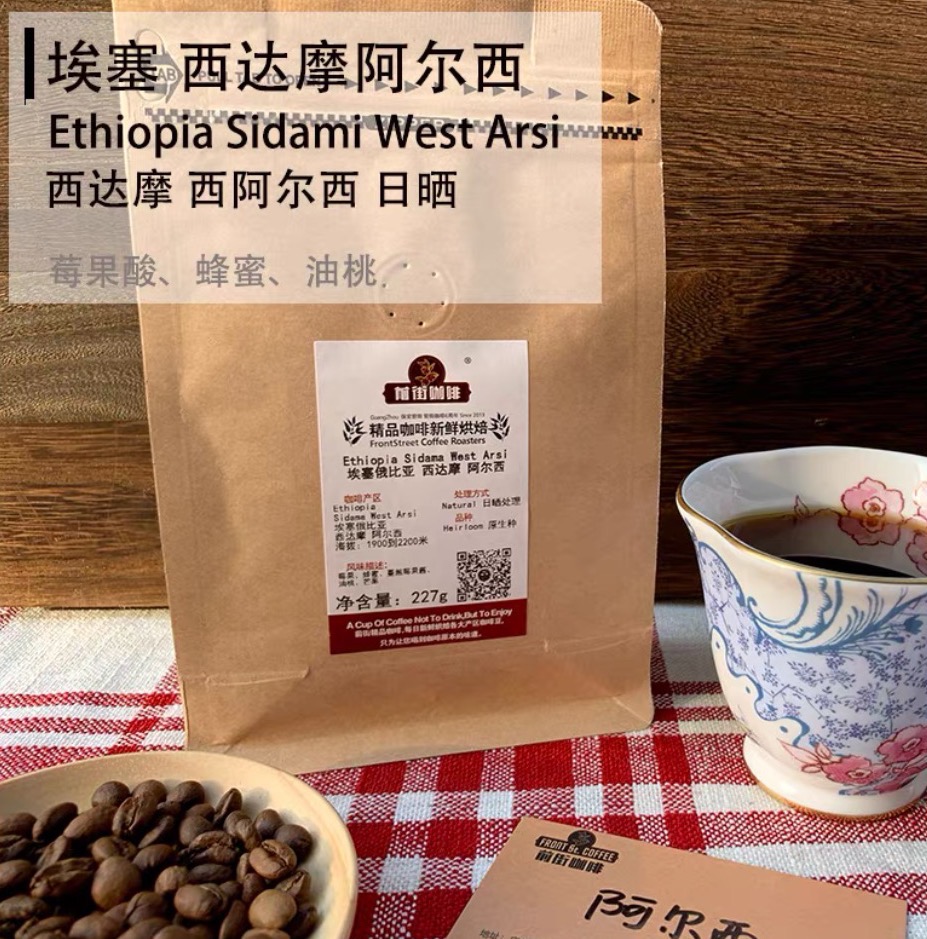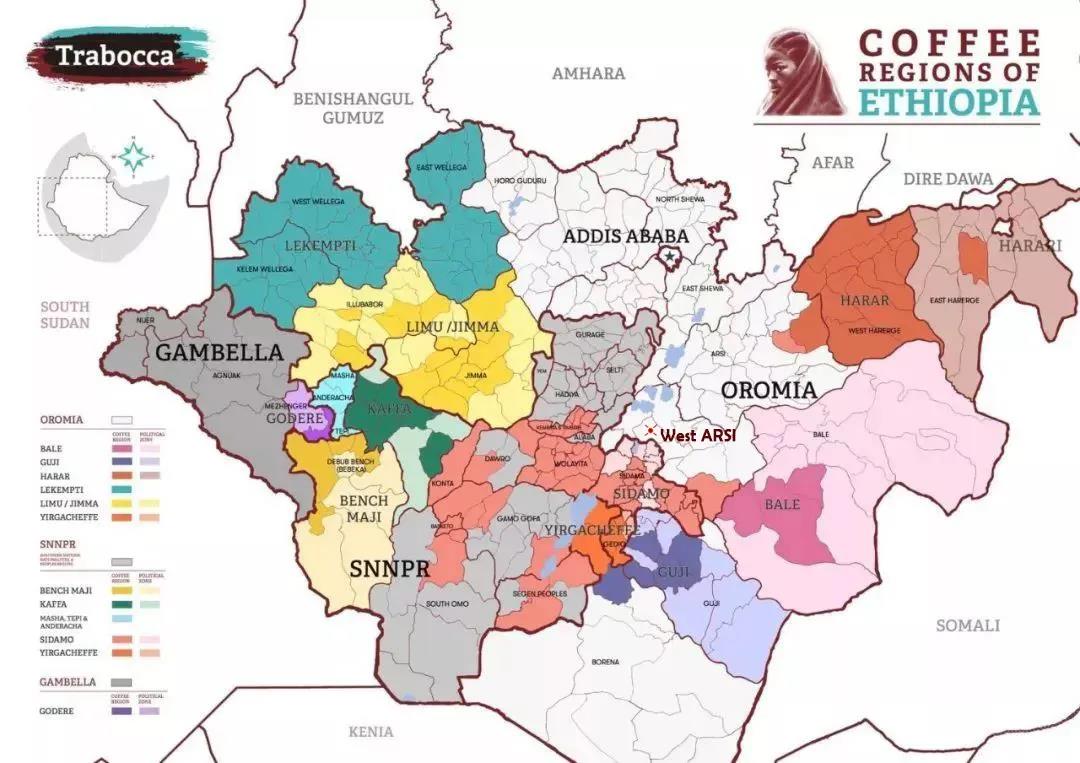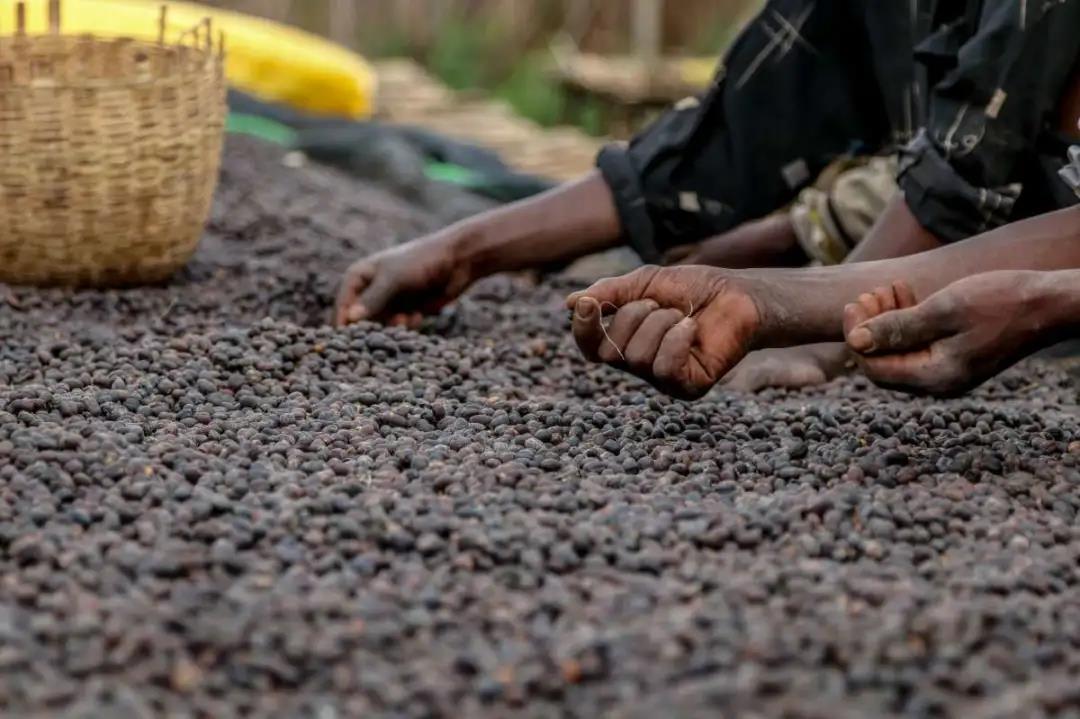According to the origin of Ethiopian coffee beans, what kind of coffee beans is Arsi and how does the coffee taste?
Arsi sun
Country of origin: Ethiopia
Producing area: Sidamo
Treatment: insolation
Variety: original species
Planting altitude: 1800
Baking degree: medium and shallow baking
It is recommended that the gram weight of hand-brewed coffee recommended by SCA should be 15g coffee powder 90 degrees to 91 degrees hot water 225ml and the ratio of water to powder at 1:15.
The flavor is floral fruit, with citrus, tea, floral aroma, bright acidity and a long finish.
When it comes to Ethiopian coffee, the most familiar ones are Yegashifi and Sidamo, and with the development of Ethiopian agricultural policy and boutique coffee
Many unfamiliar producing areas are also gradually appearing in the eyes of the public, this Arsi boutique coffee bean is one of the best.
Arsi is located between Jejassefi and Halergai, in the eastern part of the Sidamo region, where the elevation is high, the soil is fertile, and traditional green cultivation
So that the coffee has a full fruit tone, excellent sweetness.
The small farmer model is adopted in Arsi area, and the average small farmer per household is not large, about 2 to 3 hectares. Arsi's coffee planting technology is developing very rapidly.
Coffee farmers do not need to hire full-time workers, but choose coffee with the help of their families. This will enable them to better control the quality of coffee.
And the processing station will pay extra for ripe red cherries, greatly increasing the enthusiasm of coffee farmers.

West Alxi producing area
Located between the famous Yirgacheffe coffee growing area and Haller Hararge, West Arsi is located in the western part of the Sidamo region at an altitude of 1900-2200m. The area is named after a branch of the Oromo people who have lived here for a long time. West Alsi consists of three woredas, namely, Arsi (Arsi), Bale (Bale) and East Shewa (Ethiopia's third-tier administrative region). About 88.52% of the population of West Alsi is Oromo, which is very important in the history of coffee because they are the first tribes in human history to drink coffee, and half of the coffee produced in Ethiopia comes from the region.

Sun treatment
During the coffee harvest season, farmers in the Sidamo area only pick ripe red fruits and put them in baskets one by one. The picked coffee fruit has uniform size, similar maturity and no other impurities. In the process of treatment, it is necessary to manually screen defective coffee beans and immature or overripe coffee fruits. Then lay the coffee red fruit on a high wooden frame or whole scaffolding to make the sun, so as to avoid the risk of beans smelling on the ground. In the process of exposure, it will constantly turn to ensure that the coffee beans can be evenly exposed to water; every three to five days, farmers will manually screen out the defective and moldy beans. Wait for the peel to dry and harden, and then use a sheller to remove the hard peel. After obtaining the raw coffee beans, the farmer will do one last screening in pursuit of the perfect taste.

Coffee cultivation in West Alsi is based on a smallholder model, and the average smallholder farm is not large, about 2-3 hectares, but even so, they tend to be slightly larger than the usual 1.5-2 hectares in most parts of Ethiopia. Although the current coffee planting technology is still in the stage of development, compared with other producing areas, the development of coffee planting technology in West Alxi is very fast. Coffee farmers do not need to hire temporary or full-time workers, but choose coffee with the help of their families. This allows them to better control the quality of coffee, and processing stations usually pay extra for ripe red cherries, greatly increasing the enthusiasm of coffee farmers.
Important Notice :
前街咖啡 FrontStreet Coffee has moved to new addredd:
FrontStreet Coffee Address: 315,Donghua East Road,GuangZhou
Tel:020 38364473
- Prev

What grade is Guoding Ding Ye Jia Xuefei? What flavor does Yega Chuefei have? is the coffee made by hand good?
Yega Xuefei fruit production country: Ethiopia: Yega Xuefei treatment: washed varieties: original seed planting altitude: 2000 m roasting degree: medium to shallow roasting according to the SCA recommended handbrew coffee weight is 15g coffee powder 90 degrees to 91 degrees hot water 225ml, gouache ratio 1:15. Flavor flower
- Next

What varieties of Ethiopian coffee beans do you have? Is the hand-made champion coffee beans good?
Sidamo Sakuran small seed producing country: Ethiopia: Arsi treatment: solarization varieties: original species altitude: 2200 meters baking degree: medium-shallow roasted Sakui coffee bean is the name of a bean, it is produced in the Gujimbela producing area of the Sidamo coffee producing area, and Yega Xuefei also belongs to the Sidamo area. Well-known boutique coffee beans Huakui coffee beans from
Related
- Detailed explanation of Jadeite planting Land in Panamanian Jadeite Manor introduction to the grading system of Jadeite competitive bidding, Red bid, Green bid and Rose Summer
- Story of Coffee planting in Brenka region of Costa Rica Stonehenge Manor anaerobic heavy honey treatment of flavor mouth
- What's on the barrel of Blue Mountain Coffee beans?
- Can American coffee also pull flowers? How to use hot American style to pull out a good-looking pattern?
- Can you make a cold extract with coffee beans? What is the right proportion for cold-extracted coffee formula?
- Indonesian PWN Gold Mandrine Coffee Origin Features Flavor How to Chong? Mandolin coffee is American.
- A brief introduction to the flavor characteristics of Brazilian yellow bourbon coffee beans
- What is the effect of different water quality on the flavor of cold-extracted coffee? What kind of water is best for brewing coffee?
- Why do you think of Rose Summer whenever you mention Panamanian coffee?
- Introduction to the characteristics of authentic blue mountain coffee bean producing areas? What is the CIB Coffee Authority in Jamaica?

